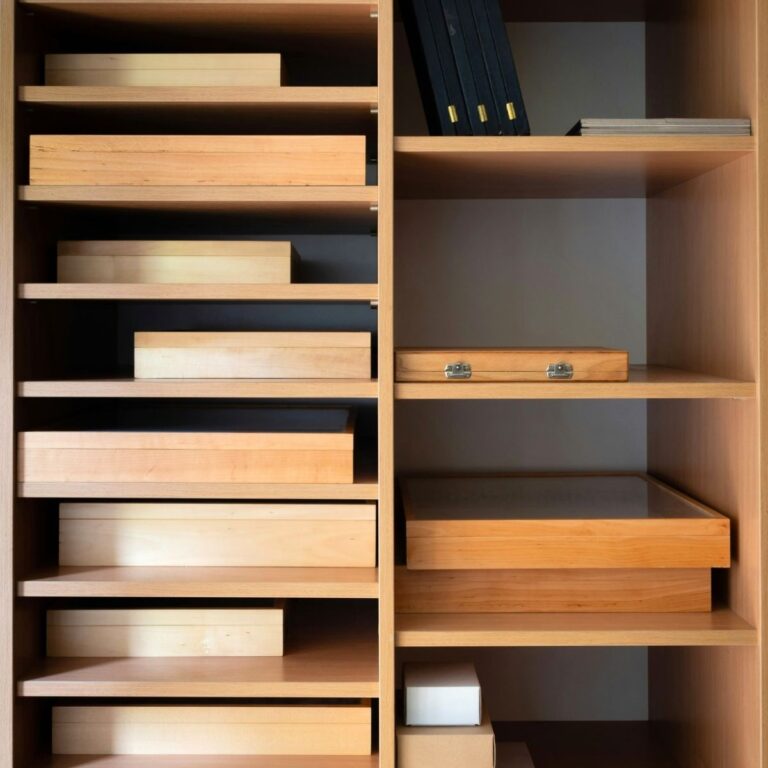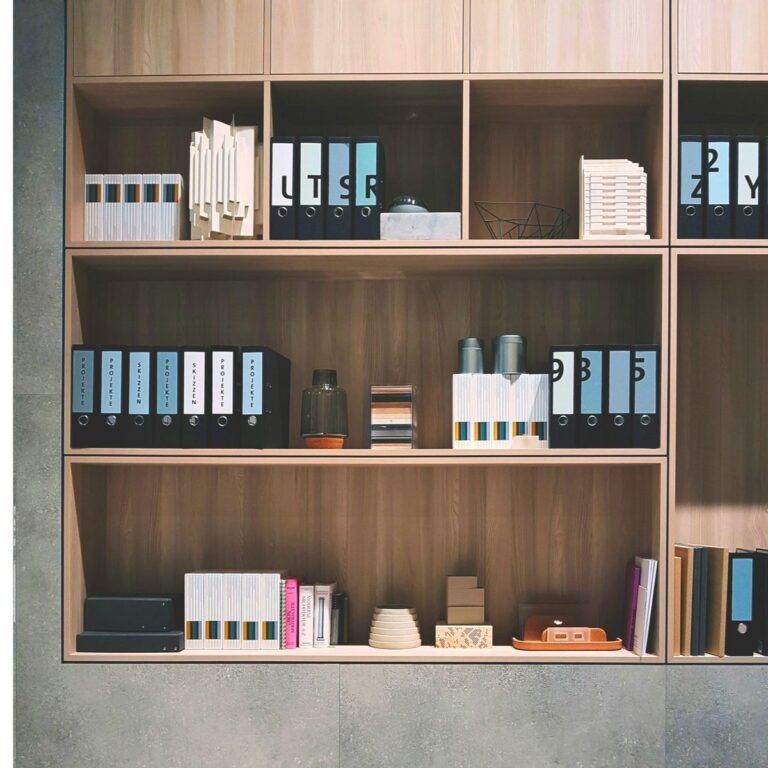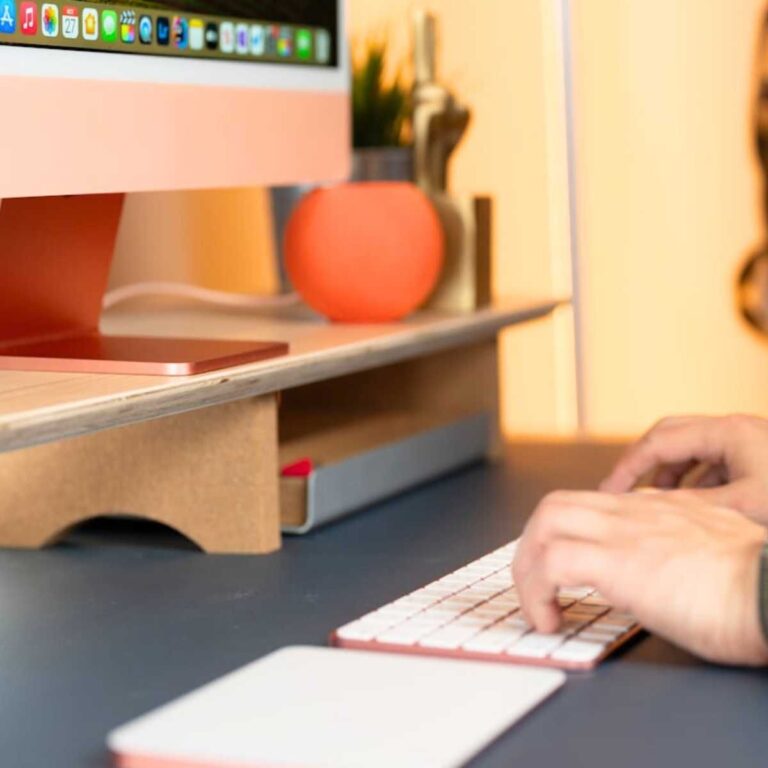The Best Way To Organize Your Computer Desktop
Learn how to organize your computer desktop with these simple and quick file management tips, and enjoy a clean and digital clutter-free space each time you login.
Whether you have a few folders or hundreds of files on your desktop, this article will provide 10 ways for organizing, grouping, and cleaning up the clutter. You’ll learn tips and tricks for keeping your files in order – clear now, and have a system in place to prevent future mess!
Want more great digital organization tips? Learn how to identify digital clutter, create the best digital back-up solution, and how to organize your bookmarks!

If reducing digital clutter and getting your technology footprint cleaned up is one of your goals this year – your digital desktop is a great place to start! Clear messy folders, old screenshots, and delete or archive older files you are no longer using.
Whether you are clearing our your work desktop, school laptop, or personal computer – having a clean and tidy home space can be a joy to see when logging in. Let’s dive into these 10 simple, actionable tips for cleaning your desktop.
Want a clutter-free digital space? Check out our guides on reducing digital clutter, how to organize your computer files and folders, and setting up the best computer backup strategy to for easy storage & retrieval.
Organize Files by Type
Use your desktops sorting features to take a quick inventory of the types of files you have on your desktop.
You can use the ‘Sort By’ or ‘Group By’ features on your desktop to organize similar file types.
Then you can create folders for each of these types: Photos, Video, Work Documents, School documents, etc. Drag & dop your files into each of the folders for a quick and easy organization system.
Archive Old Files
If you have older files you no longer use or need, consider moving them to a back-up. Whether you use physical backup system like a hard drive or thumb drive, or a digital backup system like cloud storage you can easy save older files for future reference.
Start by opening your back up. For a cloud-based online backup, access it through a program or a browser. If you use physical backups, plug in your thumb drive or hard drive to back up.
Once you can access the back-up location, drag and drop any old or unneeded files or folders to the backup for safekeeping. You can create an ‘Archive’ folder in your back up system, or drop the folders into your current organization structure.
What Files Should I Archive?
If you have files that you haven’t used or opened in 6 months or longer, those are great to start with. Evaluate if you will need these files again (archive) or perhaps they are no longer needed and can be deleted.
Sort by Priority
If you are juggling a lot of work, life, or school projects sorting each one by priority can help! Keep the most important files and folders on hand, so you can access them quickly.
You can create a folder called “High Priority” for those files you need to work with more urgently. All other lower priority folders can be moved to a different backlog folder or archived.
Delete Unnecessary Shortcuts
Shortcuts are icons on your desktop that can take you quickly to apps, computer programs, or files. When you install a new computer program, a desktop shortcut may be atomically created. These can add up and accumulate into digital clutter!
If you have a lot of unused shortcuts on your desktop – consider dragging and dropping them into your trash or recycle bin.
This won’t delete the program, just the desktop shortcut. You will still be able to access the program through your app library or local program folders.
Use a Temporary Folder
For short-term files that you may need quick access to, consider creating a ‘Temp’ folder where you can keep the files for easy retrieval.
Right click on your desktop and create a new folder. Drag and drop your temporary files in there for safe keeping.
Digital Tip!
Set a weekly or monthly reminder to review what files are in your temporary folder to see if any can be moved, archived, or deleted.
Get a New Desktop Background
Using a desktop background with a grid pattern can help visually organize your apps, as well as show when there is a little extra clutter.
Download a grid-style background, and make sure your apps are aligned or ‘snapped’ to a grid, so they will all be in order.
Using the grid, you can align your desktop apps and files into sections: Work, Personal, Projects, Utilities, etc!
Use a Downloads Shortcut
By adding a shortcut to your Downloads folder right on your desktop, you can quickly access downloaded files rather than having them saved to your desktop.
Using shortcuts are a great way to quickly get to your most-used files and folder. But (as we noted above!) make sure you keep only the shortcuts you use most.
Set a Limit on the Number of Files You Keep
Choosing a limit on the number of files on your desktop is a good way to evaluate what is most important to keep. Once you know your number, you can maintain and organize any new files you need access to.
For example, if you set a rule to only have 20 files and folders, you can organize and maintain just those 20 nicely. Use the “one in, one out” rule and if you want to add a new file to your desktop, make sure you archive or move and older, unused one.
Use Built-In Cleaning Tools
You can use your computer’s built-in tools to help you tackle organizing your desktop files.
- On a Windows computer, you can right click and select “Sort By” or use the “Auto-Arrange” feature which will compile your desktop files into one area.
- On a Mac, I love the “Stacks” feature which groups files by type.
You can also download more advanced programs (on both Windows and Mac) for more detailed organization.
Tackle Your “Today”
If you don’t know where to start, create a “today” folder, and move everything you want to organize that day in one place. The quantity of files is up to you, but start small with a manageable amount.
Having a “Today” folder helps break down a large chuck of materials into smaller groups you can work with. It may make the process less overwhelming!
Even by sorting just a few files a day, you can start to see progress and get familiar with how to move and organize your data. One file at a time!
Browse our Control + Save information library for easy how-to videos, articles, & more on digital organization and physical paper and document storage!






